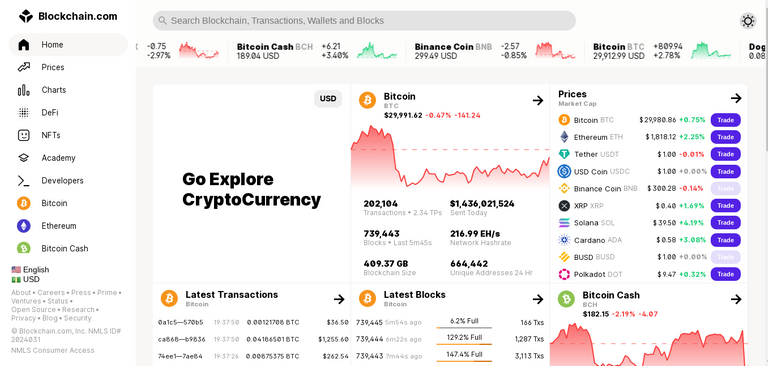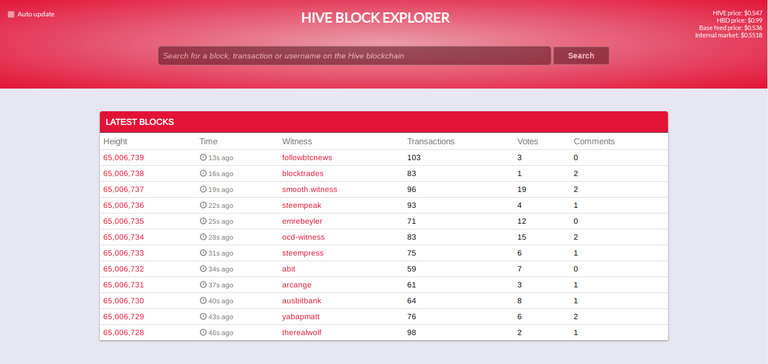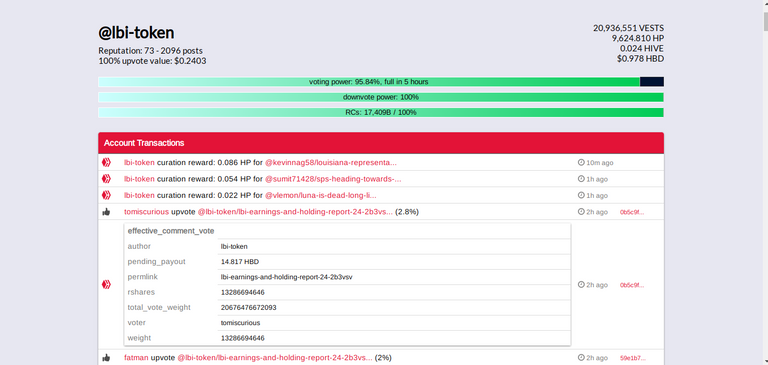
The blockchain is at the heart of cryptocurrencies and the revolution that comes with them. While the blockchain and its design may sound really complicated for most users, especially for newbies, we can all agree on a simple fact: the blockchain is a decentralized storage system that stores all crypto-related transactions.
Some unique features of the blockchain are that the data stored on it cannot be altered, you cannot even delete them; and most importantly, they are public—anyone can access them. It is on this principle of transparency, decentralization, and openness that blockchain explorers were born.
What is a Blockchain Explorer?
A blockchain explorer could be considered a website, a tool, or a web application that enables users of a blockchain to see or find activities within the blockchain in real-time. A blockchain explorer basically logs all transactions (transactions include all financial and non-finance-related activities) that take place on a blockchain. Usually, this is done using special strings of alphanumeric characters referred to commonly as hashes (could be more complicated than this).
The Blockchain explorers are basically the Wikipedia of the blockchain world. All information and transactions that occurred on a particular blockchain from the birth/initial creation of that blockchain till date could be found on its explorer.
Almost all independent blockchain projects have an explorer, while sub-projects run on the explorer of their apex blockchain.
Some Common Blockchain Explorers
Blockchain.com

Blockchain.com is a very important blockchain explorer that hosts the Bitcoin and Ethereum blockchain files. To access this explorer, go to https://www.blockchain.com/explorer.
Hive Explorer

The Hive blockchain explorer is available at: https://hiveblockexplorer.com/ It is the native blockchain explorer of the Hive blockchain. It helps you keep track of activities on the Hive blockchain in a way that native frontends cannot.
Who Needs an Explorer?
These blockchain explorers are designed for all users of a blockchain. Whether you're a miner, cryptocurrency trader, validator, business owner, or just a crypto enthusiast, the blockchain explorer will come in handy at some point. During a buy or sale or general crypto, block explorers can be used to examine the status of a transaction. The entire value of the assets stored at an address, the total amount of crypto received and held at an address, and the total amount of crypto sent from the address, are all available for a specific blockchain address on the Blockchain explorer. Because of this capability, blockchain explorers are essential in any crypto fraud investigation.
Blockchain explorers are highly essential in the cryptoverse. One common way I use them often is to present a proof of transaction, especially when centralized exchanges (CEX) are being finicky. Blockchain explorers present an undeniable proof of a transaction.
How to Use an Explorer
A blockchain explorer is easy to use. To use one, simply type in the address you want to track (or in the case of the Hive blockchain, the username, as your username is your wallet address on Hive), and the explorer will reveal all recent activities on that account. Here is an example of tracking @LBI-TOKEN on the Hive blockchain explorer:

Closing Remarks
The Blockchain Explorer helps you explore the beauty of the blockchain and its transparency. They are the search engines of the blockchain. It gives you deep information about an address on the blockchain and provides an unmatched level of granularity in terms of available information. Always exploit the explorer to your advantage!
Let me sign off by introducing myself as a new member of the @LBI-TOKEN team. I am @zestimony. I will be sharing content here every Sunday.
Feel free to reach out to my personal profile.
Posted Using LeoFinance Beta



